Expert’s Rating
Pros
- Tons of features
- Excellent typing
- Improved 2.4GHz wireless
- Endless customization
Cons
- No adjustable feet
- No wrist rest
Our Verdict
With new wireless options and an improved typing feel, the Q Max series keeps Keychron ahead of its competitors for high-end keyboards.
Price When Reviewed
$214
Best Prices Today: Keychron Q3 Max keyboard
Keychron introduced its Q series in 2021. These premium keyboards used popular elements more commonly seen in boutique, limited-batch keyboards made by members of the mechanical community, like hot-swap switch sockets, gasket mounting, full aluminum bodies, and support for open-source programming tools like VIA. Keychron quickly rose to the top of recommendation lists (like ours!) and made about a million different models in different form factors, then gave ’em all Bluetooth with the Q Pro series.
So what’s left to do? Not a whole lot, frankly — I still recommend Keychron Q boards to just about anyone who wants a premium design. But Keychron just keeps iterating, and the latest addition to its top-of-the-line series is dual-mode wireless. Frequently seen in high-end conventional keyboards from companies like Logitech, this system allows a direct USB dongle connection over the 2.4GHz band, or triple-device Bluetooth. Of course you can always just plug in a USB-C cable if you want to skip wireless or you need a quick recharge.
Michael Crider/Foundry
With these new wireless options, the Q Max series becomes more reliable as a board that switches between standard PCs and mobile devices, and can even do passable service as gaming keyboards. They’re an easy choice for someone who wants a fantastic board with tons of high-end features and customization options. And just to sweeten the pot, Keychron has enhanced some of its internal design and switch options.
I’m reviewing the Q3 Max model, but you can apply most of the conclusions here to its stablemates, the Q1 Max, Q2 Max, Q5 Max, and Q6 Max, which are merely different sizes of the same design. The Q60, Q65, Q10, and Q8 models are all fairly unique layouts, and will require a little more research on your part to determine whether they’re a good fit.
With these new wireless options, the series becomes more reliable as a board that switches between devices.
Keychron Q Max design
The Q3 Max is a tenkeyless design, meaning it foregoes the number pad on the far right of a full-sized keyboard. In terms of layout it has one extra trick up its sleeve, a volume knob (press down for mute by default) between F12 and Print Screen. Thanks to a little creative spacing on the function row, this doesn’t make the keyboard incompatible with third-party keycap layouts and doesn’t increase the keyboard’s size.
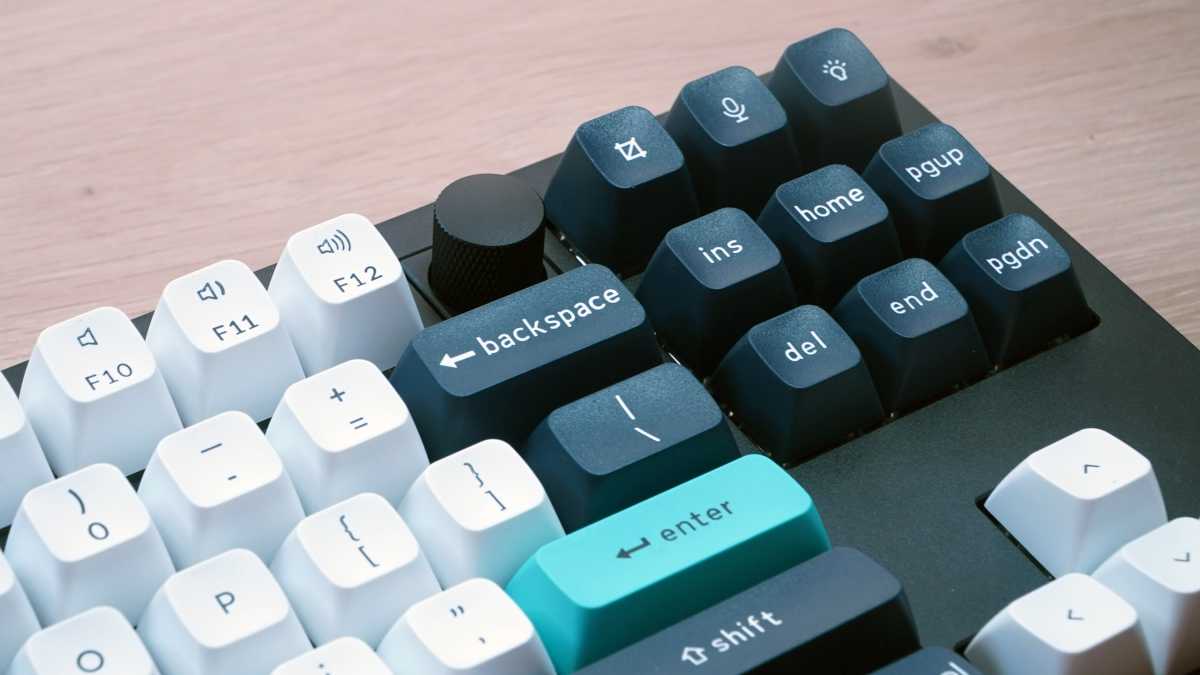
Michael Crider/Foundry
Which is good, because it’s a big, big board. While the TKL layout saves you a bit of horizontal space on your desk, this thing is still pretty large for its layout at 14.5 inches wide and 5.5 inches deep. That chunky, all-aluminum body tips my kitchen scale at 62.8 ounces, nearly four full pounds (1.78 kilograms) of keyboard. I suppose you could travel with this thing, but you might have extra charges for your luggage if you’re flying.
In terms of technical features, the Q Max series has basically everything Keychron can throw at it. To save you some reading time I’m just going to list them out:
- Full aluminum body
- Hot-swap switch sockets
- Gasket mount PCB
- Multiple internal layers of foam and padding
- PBT keycaps
- RGB lighting
- QMK and VIA programming
- Triple-device Bluetooth
- 2.4GHz wireless dongle with 1000Hz polling mode
- Gateron “Jupiter” switches in Red, Brown, or Banana Yellow
- Screw-in stabilizers
If you don’t speak keyboard geek, just know that that’s a crap-ton of features, pretty much everything you could want in a high-end design. The only notable exception in terms of functionality is adjustable actuation switches, a popular gaming feature that’s coming in Keychron’s HE series. But adding that would also cut off compatibility with the vast majority of MX-style key switches and the universe of customization that they represent. Oh, there’s also no embedded screen, which is no great loss in my book.
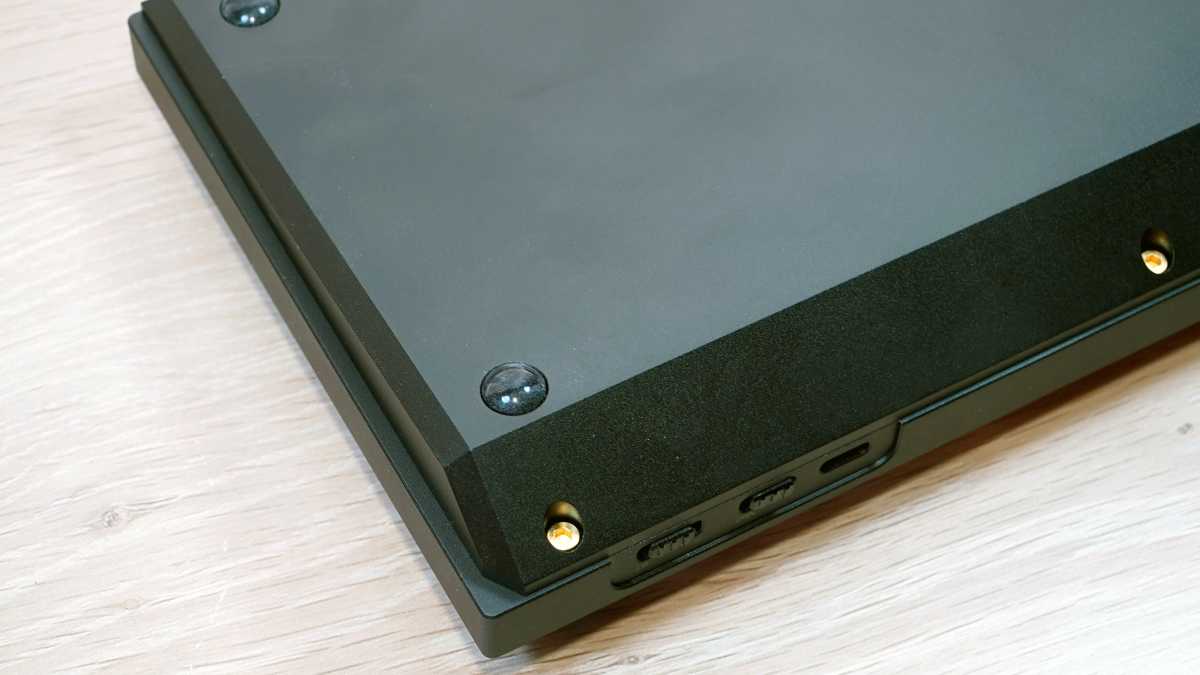
Michael Crider/IDG
I will point out that the keyboard’s gigantic aluminum body does not have deployable feet on the bottom. That means you can have any typing angle you want, so long as you only want one. This is a holdover from the previous Q series, and a curious gap in features, considering how much stuff Keychron gives you in the box — would it really be too much to ask for some screw-on feet?
Would it really be too much to ask for some screw-on feet?
I’m a big fan of Keychron’s straightforward and utilitarian design aesthetic. In the black version of the board you get tall, chunky keycaps on white and navy, with a splash of teal coloring on the Escape and Enter keys. The box includes both Windows and Mac modifier keys as usual, complementing the Win/Mac hardware switch that remains a part of the brand identity. Next to it is a three-way operation switch: wired, dongle, or Bluetooth.
How’s the Keychron Q Max for typing and gaming?
I’m surprised it’s possible, but if anything, typing on a Q Max is even more solid than on previous Q series designs. I’m putting that down to a few improvements mentioned on the promotional page: You get four layers of foam and latex padding, plus a double gasket structure. I’m a fan of the more solid build and less flex in the switches, but if you want a little more wiggle in the circuit board and a little less stiffness, you can always open up the case and remove some or all of those layers.
This review unit came with Gateron’s “Jupiter Banana” yellow switches, which are tactile (gentle bump without a click) with a bit more force required for registering than usual. Fanciful name aside, they’re super-smooth thanks to lubing done at the factory. It’s a harder, more forceful typing experience than you might be used to, but not so stiff as, say, something like a Kailh Box Navy.
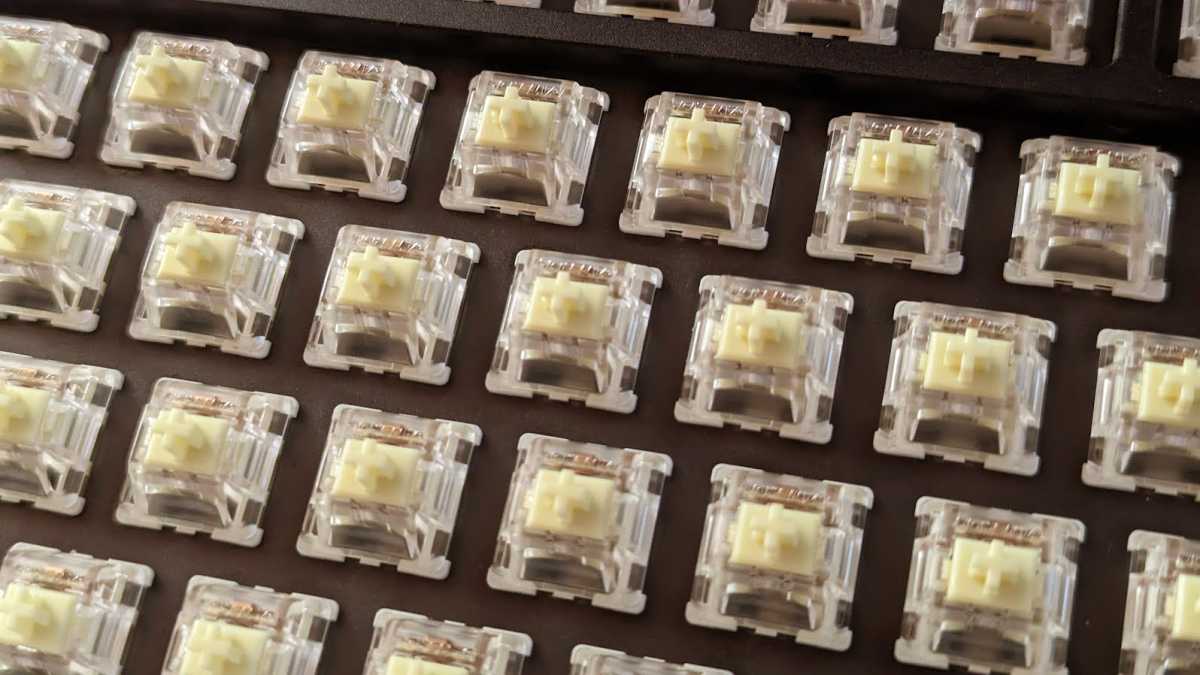
Michael Crider/Foundry
Combined with the very high-profile rounded keycaps that come with the board, it’s accommodating to someone who likes more old-fashioned, high-pressure typing…or who just has heavy fingers, I suppose. I wasn’t as thrilled with the stabilizers — the one on the Backspace key had some serious rattle to it, though the rest were better and quieter.
If you want something lighter in terms of feel, I’d go with the Jupiter Red switch option. You can also skip the switches and keycaps entirely and supply your own by selecting the “Barebone” configuration on Keychron’s website, but since that only saves you $20, I wouldn’t recommend it.
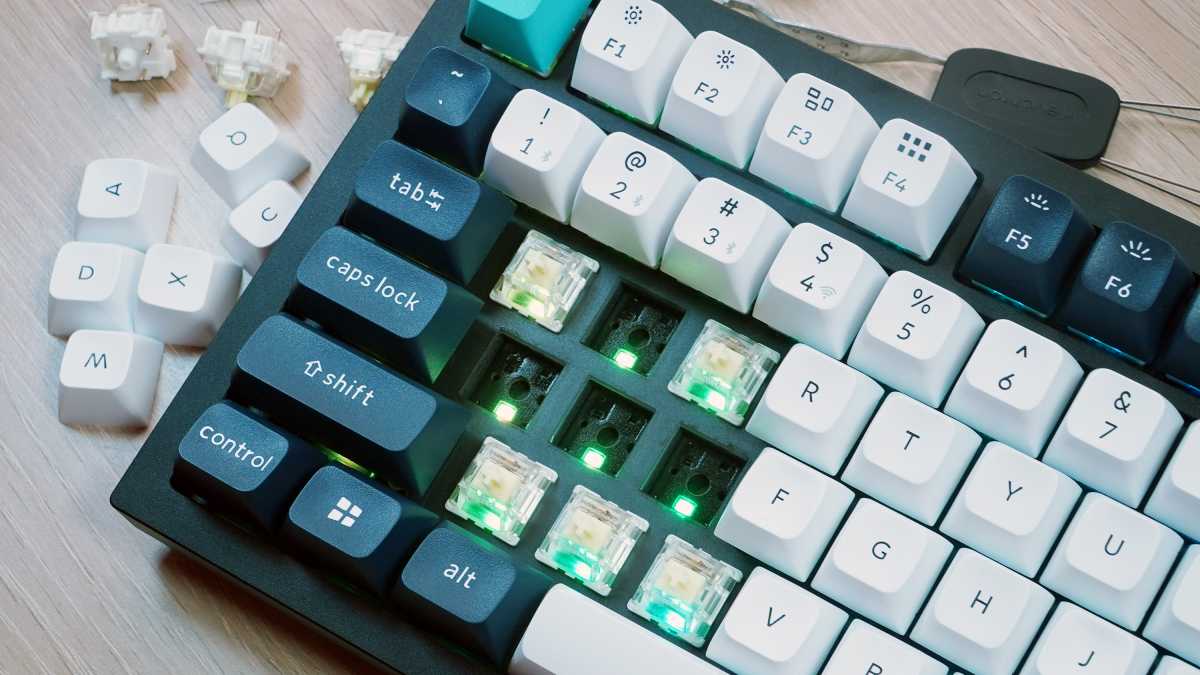
Michael Crider/Foundry
Despite Keychron making a big splash with the Lemokey L3 as its first dedicated “gaming” board, the Max series has a functionally identical wireless setup. That means it’s just as good for gaming if you stick to the 2.4GHz dongle or keep it wired, thanks to 1,000Hz polling that can keep up with all but the most superhuman of twitchy gamers. Bluetooth drops things down to just 90Hz polling, which will work, but is far from ideal.
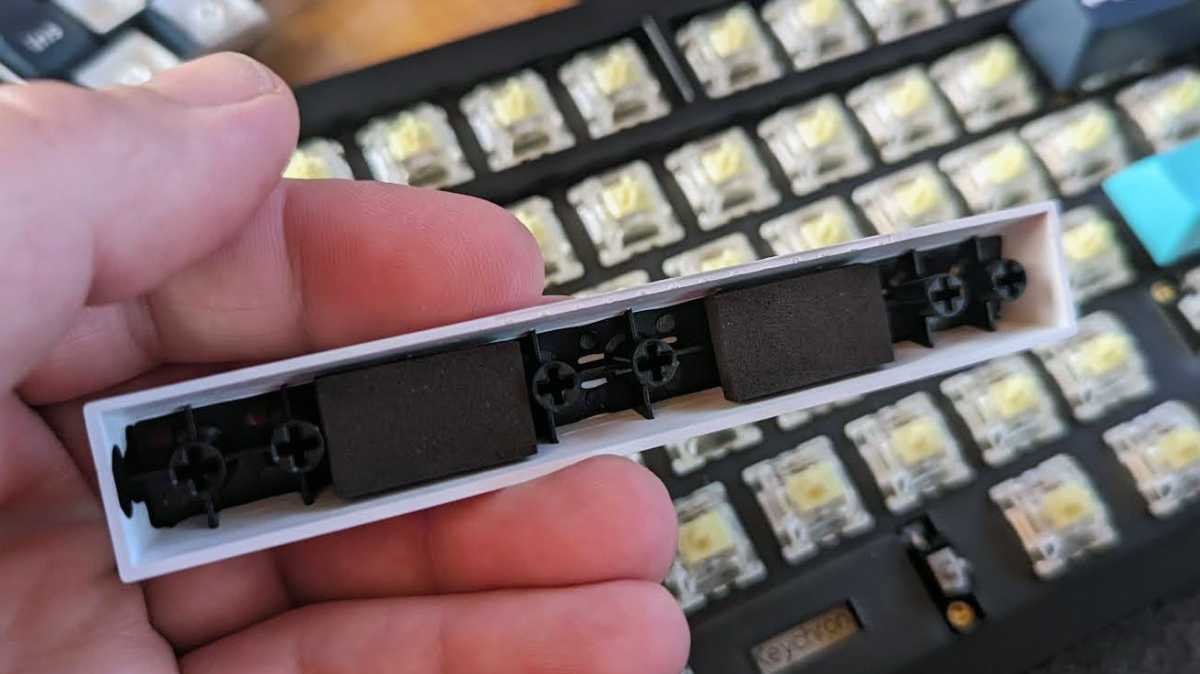
Even the space bar has some sound-absorbing foam installed.
Michael Crider/Foundry
That said, this configuration with its high-profile keycaps and heavy tactile switches isn’t ideal for gaming. Stiff presses and long travel mean you’ll be at a disadvantage versus someone with lighter, faster springs. The programming options also lack per-game profile settings available on dedicated gaming boards. You can certainly build the Q Max series out to be a solid gaming keyboard by supplying lighter, faster switches and lower-profile keycaps, like DSA. But if you’re spending this much on a keyboard and you want to game on it, you might as well go all the way with one of the best dedicated gaming keyboards available.
This configuration with its high-profile keycaps and heavy tactile switches isn’t ideal for gaming.
How can you customize the Keychron Q Max?
There’s a lot you can do with this board in terms of customization. Switches and keycaps are obvious, and with a standard ANSI layout, pretty much every keycap set available will match up here. On top of that you can customize with two different layouts (Windows and Mac on the hardware switch) and their function layers in VIA, which also gives you access to RGB lighting adjustments and macro programming.
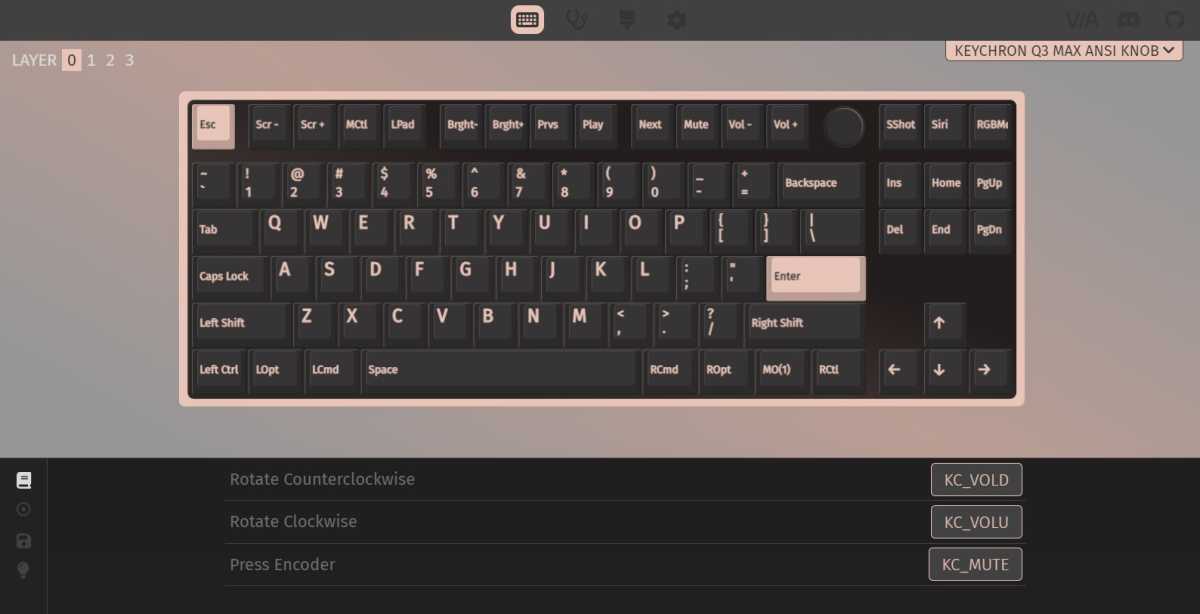
Michael Crider/Foundry
Want to go more than skin deep? You can completely disassemble the keyboard using the tools in the box: a combination keycap and switch puller, Allen wrench, and screwdriver. Without anything extra you can change out the stabilizers, remove four layers of foam and plastic insulation layers, and add or remove extra foam gaskets (also in the box). And unlike some other keyboard makers with aspirations towards the “custom” label, none of this will void the warranty.
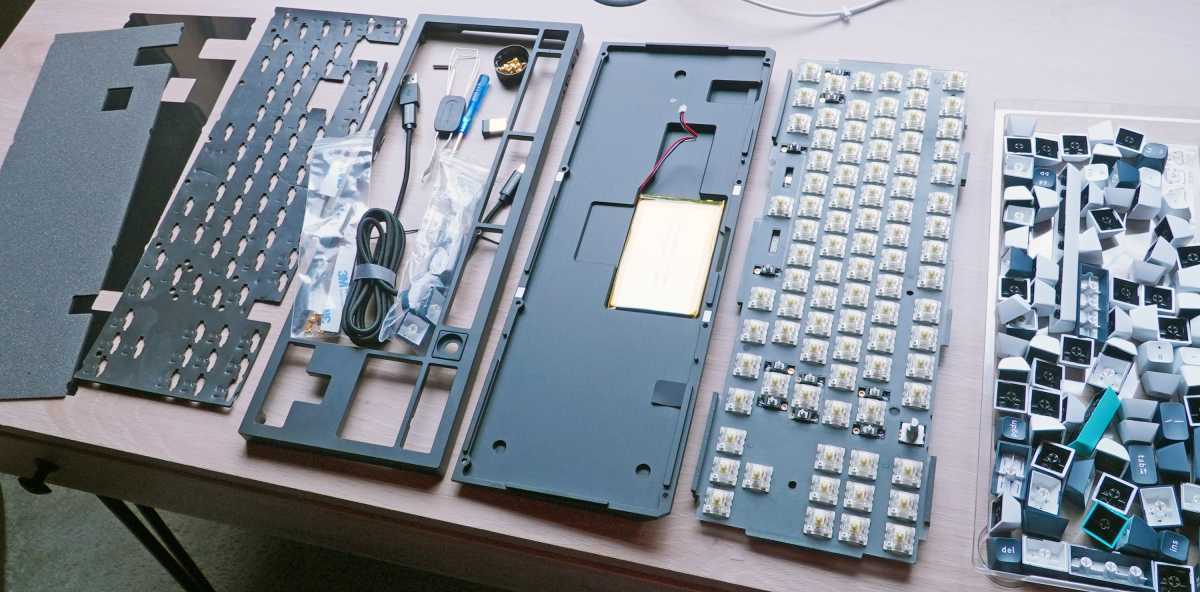
Michael Crider/Foundry
Basically, Keychron remains unbeaten by any major keyboard suppliers in terms of its out-of-the-box customization options.
Is the Keychron Q Max worth it?
Our review unit is the Q3 Max, which costs $194 for a version without any switches or keycaps and goes up to $214 for the “fully assembled” edition. That’s comparable to other high-end boards with custom features, though again I’d like to see keyboard feet and a wrist rest on anything in this category, even with all the extras in the box.
The value proposition for other members of the Q Max line is a bit strange. For example, the far larger Q6 Max with its full-sized, 108-key layout plus volume knob is just $5 more than the Q3 Max, while the relatively teeny Q2 Max is only $5 less. If you’re looking for the best deal on a Q Max keyboard key-for-key and pound-for-pound, it makes sense to go bigger.
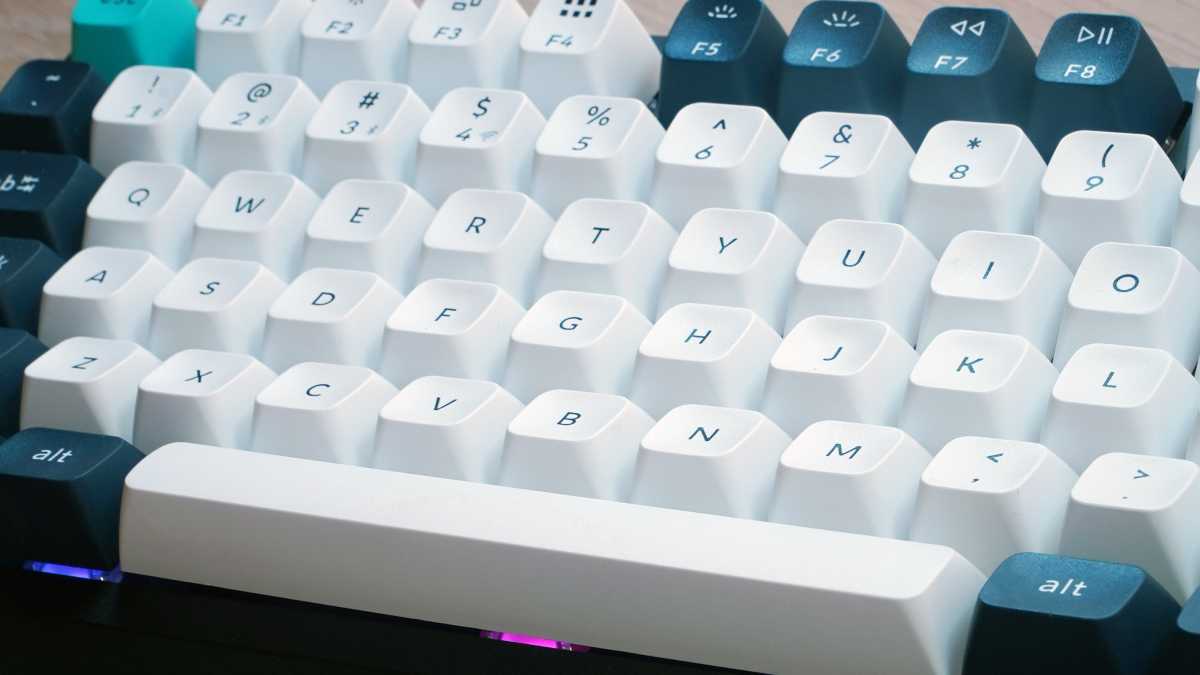
Michael Crider/Foundry
What about other brands? I don’t think Keychron has quite bested the much more niche Keydous NJ80-AP in terms of pure typing excellence, although it’s darn close thanks to factory-lubed switches and improved internal padding. And at nearly $70 less, the plastic Keydous board still has a lot to recommend it.
But with a much more solid all-aluminum build, easy VIA programming, better customization, and wireless options that are now up to scratch, the Q3 Max and its stablemates keep Keychron’s spot at the top of our best picks list. Other choices in this category either lack any kind of wireless (like Drop’s CTRL V2 or the Glorious GMMK Pro) or cost far, far more from a boutique supplier.
If you want a keyboard with a huge amount of features, fantastic out-of-the-box typing, and incredible customization, the Q Max series remains the board to beat.
Despite 2.4GHz wireless upping its speed and latency, the Q Max series still isn’t ideal for gaming due to limitations in programming. And you’ll have to invest quite a lot into this already-expensive board to make it ideal for twitchy action games or shooters. But for pretty much everyone else who wants a keyboard with a huge amount of features, fantastic out-of-the-box typing, and incredible customization, the Q Max series remains the board to beat.



